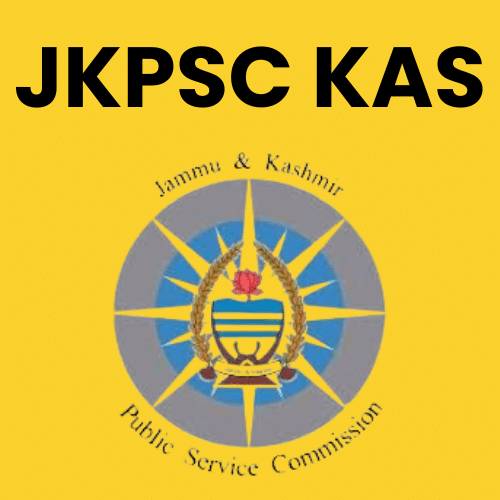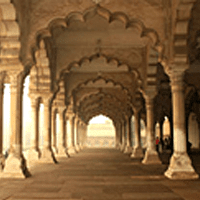Best Study Material for JKPSC KAS (Jammu and Kashmir) Exam
JKPSC KAS (Jammu and Kashmir) Exam > JKPSC KAS (Jammu and Kashmir) Notes > JKPSC KAS (Jammu and Kashmir): Preparation Course > Demographic Profile of Jammu and Kashmir
Demographic Profile of Jammu and Kashmir | JKPSC KAS (Jammu and Kashmir): Preparation Course PDF Download
| Download, print and study this document offline |
Please wait while the PDF view is loading
Page 1 DEMOGRAPHIC PROFILE OF JAMMU AND KASHMIR CHAPTER 31 Population of Jammu and Kashmir Total population of Jammu and Kashmir as per Census 2011 is 1,25,41,302,of which male and female are 66,40,662 and 59,00,640 respectively.The total population growth as per Cansus 2011 is 23.64 per cent.The population of Jammu and Kashmir forms 1.04 per cent of India.According to Census 2011,Jammu district in Jammu and Kashmir has the highest population of 15,29,958 and Leh has the lowest population of 1,33,487.Population-wise the rank of Jammu and Kashmir among all the 29 states of India is 19th. Five Districts with High Population Five Districts with Low Population District Population District Population Jammu 15,29,958 Leh 1,33,487 Srinagar 12,36,829 Kargil 1,40,802 Anantnag 10,78,692 Kishtwar 2,30,696 Baramulla 10,08,039 Shopian 2,66,215 Kupwara 8,70,354 Ramban 2,83,713 Urban and Rural Population of Jammu and Kashmir As per Census 2011,the total urban population of Jammu and Kashmir is 34,33,242 in which urban male population is 18,66,185 and urban female population is 15,67,057.The urban population in the last 10 years has increased by 27.38 per cent. As per Census 2011,the total population living in rural areas is 91,08,060 of which 47,74,477 are males while remaining 43,33,583 are females. Child Population of Jammu and Kashmir According to Census 2011,the total child population (0-6 years) of Jammu and Kashmir is 20,08,642,in which rural population is 15,96,076 and urban population is 4,12,566.The district with highest child population is Anantnag (2,06,283) and the district with lowest child population is Leh (11,816). Page 2 DEMOGRAPHIC PROFILE OF JAMMU AND KASHMIR CHAPTER 31 Population of Jammu and Kashmir Total population of Jammu and Kashmir as per Census 2011 is 1,25,41,302,of which male and female are 66,40,662 and 59,00,640 respectively.The total population growth as per Cansus 2011 is 23.64 per cent.The population of Jammu and Kashmir forms 1.04 per cent of India.According to Census 2011,Jammu district in Jammu and Kashmir has the highest population of 15,29,958 and Leh has the lowest population of 1,33,487.Population-wise the rank of Jammu and Kashmir among all the 29 states of India is 19th. Five Districts with High Population Five Districts with Low Population District Population District Population Jammu 15,29,958 Leh 1,33,487 Srinagar 12,36,829 Kargil 1,40,802 Anantnag 10,78,692 Kishtwar 2,30,696 Baramulla 10,08,039 Shopian 2,66,215 Kupwara 8,70,354 Ramban 2,83,713 Urban and Rural Population of Jammu and Kashmir As per Census 2011,the total urban population of Jammu and Kashmir is 34,33,242 in which urban male population is 18,66,185 and urban female population is 15,67,057.The urban population in the last 10 years has increased by 27.38 per cent. As per Census 2011,the total population living in rural areas is 91,08,060 of which 47,74,477 are males while remaining 43,33,583 are females. Child Population of Jammu and Kashmir According to Census 2011,the total child population (0-6 years) of Jammu and Kashmir is 20,08,642,in which rural population is 15,96,076 and urban population is 4,12,566.The district with highest child population is Anantnag (2,06,283) and the district with lowest child population is Leh (11,816). Districts with High Child Population District with Low Child Population District Population District Population Anantnag 2,06,283 Leh 11,816 Kupwara 1,96,983 Kargil 20,407 Baramula 1,61,841 Samba 38,020 Jammu 1,59,868 Kishtwar 39,124 Badgam 1,54,746 Shupiyan 40,271 Population Density of Jammu and and Kashmir As per Census 2011,the total population density of Jammu and Kashmir is 56 person per sq km.The district with highest population density is Ganderbal (1148). The district with lowest population density in Leh (3). Five Districts with High Five Districts with Low Population Density Population Density District Population Density District Population Density Ganderbal 1148 Leh 3 Bandipora 1137 Kargil 10 Shopian 853 Doda 46 Jammu 653 Kishtwar 140 Srinagar 625 Reasi 183 Sex Ratio of Jammu and Kashmir As per Census 2011,the total sex ratio of Jammu and Kashmir is 889 and in Census 2001 it was 892.The two districts of Jammu and Kashmir,Kulgam and Shopian, have the highest sex ratio i.e.951.The district with lowest sex ratio is Leh i.e.690. Five Districts with High Sex Ratio Five Districts with Low Sex Ratio District Sex Ratio District Sex Ratio Kulgam 951 Leh 690 Shopian 951 Kargil 810 Anantnag 927 Kupwara 835 Kishtwar 920 Rajouri 860 Doda 919 Udhampur 870 Scheduled Caste Population in Jammu and Kashmir As per Census 2011,the state of Jammu and Kashmir has total Scheduled Caste population of 9,24,991,in which male population is 4,86,232 and female population is 4,38,759.ScheduledCastepopulationinthestateis7.38percentofthetotal population. Page 3 DEMOGRAPHIC PROFILE OF JAMMU AND KASHMIR CHAPTER 31 Population of Jammu and Kashmir Total population of Jammu and Kashmir as per Census 2011 is 1,25,41,302,of which male and female are 66,40,662 and 59,00,640 respectively.The total population growth as per Cansus 2011 is 23.64 per cent.The population of Jammu and Kashmir forms 1.04 per cent of India.According to Census 2011,Jammu district in Jammu and Kashmir has the highest population of 15,29,958 and Leh has the lowest population of 1,33,487.Population-wise the rank of Jammu and Kashmir among all the 29 states of India is 19th. Five Districts with High Population Five Districts with Low Population District Population District Population Jammu 15,29,958 Leh 1,33,487 Srinagar 12,36,829 Kargil 1,40,802 Anantnag 10,78,692 Kishtwar 2,30,696 Baramulla 10,08,039 Shopian 2,66,215 Kupwara 8,70,354 Ramban 2,83,713 Urban and Rural Population of Jammu and Kashmir As per Census 2011,the total urban population of Jammu and Kashmir is 34,33,242 in which urban male population is 18,66,185 and urban female population is 15,67,057.The urban population in the last 10 years has increased by 27.38 per cent. As per Census 2011,the total population living in rural areas is 91,08,060 of which 47,74,477 are males while remaining 43,33,583 are females. Child Population of Jammu and Kashmir According to Census 2011,the total child population (0-6 years) of Jammu and Kashmir is 20,08,642,in which rural population is 15,96,076 and urban population is 4,12,566.The district with highest child population is Anantnag (2,06,283) and the district with lowest child population is Leh (11,816). Districts with High Child Population District with Low Child Population District Population District Population Anantnag 2,06,283 Leh 11,816 Kupwara 1,96,983 Kargil 20,407 Baramula 1,61,841 Samba 38,020 Jammu 1,59,868 Kishtwar 39,124 Badgam 1,54,746 Shupiyan 40,271 Population Density of Jammu and and Kashmir As per Census 2011,the total population density of Jammu and Kashmir is 56 person per sq km.The district with highest population density is Ganderbal (1148). The district with lowest population density in Leh (3). Five Districts with High Five Districts with Low Population Density Population Density District Population Density District Population Density Ganderbal 1148 Leh 3 Bandipora 1137 Kargil 10 Shopian 853 Doda 46 Jammu 653 Kishtwar 140 Srinagar 625 Reasi 183 Sex Ratio of Jammu and Kashmir As per Census 2011,the total sex ratio of Jammu and Kashmir is 889 and in Census 2001 it was 892.The two districts of Jammu and Kashmir,Kulgam and Shopian, have the highest sex ratio i.e.951.The district with lowest sex ratio is Leh i.e.690. Five Districts with High Sex Ratio Five Districts with Low Sex Ratio District Sex Ratio District Sex Ratio Kulgam 951 Leh 690 Shopian 951 Kargil 810 Anantnag 927 Kupwara 835 Kishtwar 920 Rajouri 860 Doda 919 Udhampur 870 Scheduled Caste Population in Jammu and Kashmir As per Census 2011,the state of Jammu and Kashmir has total Scheduled Caste population of 9,24,991,in which male population is 4,86,232 and female population is 4,38,759.ScheduledCastepopulationinthestateis7.38percentofthetotal population. Rural Scheduled Caste Population Urban Scheduled Caste Population Total 7,51,026 Total 1,73,965 Male 3,92,981 Male 93,251 Female 3,58,045 Female 80,714 Religion-wise Distribution of Population in Jammu and Kashmir Jammu and Kashmir is Muslim majority state in India with approximately 68.31 % of state population following Islam as their religion. Religion-wise Distribution of Populaiton Description Population Percentage Muslim 85,67,485 68.31 % Hindu 35,66,674 28.44 % Sikh 2,34,848 1.87 % Buddhist 1,12,584 0.90 % Christian 35,631 0.28 % Not Stated 20,082 0.16 % Jain 2,490 0.02 % Other Religion 1,508 0.01 %Read More
FAQs on Demographic Profile of Jammu and Kashmir - JKPSC KAS (Jammu and Kashmir): Preparation Course
| 1. What is the demographic profile of Jammu and Kashmir according to JKPSC KAS? |  |
| 2. What are some key demographic indicators that are important for the JKPSC KAS exam? |  |
Ans. Some key demographic indicators that are important for the JKPSC KAS exam include population growth rate, sex ratio, literacy rate, age distribution, and religious composition.
| 3. How does the demographic profile of Jammu and Kashmir impact the development policies of the region as per the JKPSC KAS exam? |  |
Ans. The demographic profile of Jammu and Kashmir plays a significant role in shaping the development policies of the region, as it helps in understanding the specific needs and challenges faced by different population groups.
| 4. What are some of the major demographic trends observed in Jammu and Kashmir according to the JKPSC KAS exam? |  |
Ans. Some major demographic trends observed in Jammu and Kashmir include population growth, urbanization, migration patterns, and changes in the age structure of the population.
| 5. How can an understanding of the demographic profile of Jammu and Kashmir benefit policymakers and administrators preparing for the JKPSC KAS exam? |  |
Ans. An understanding of the demographic profile of Jammu and Kashmir can help policymakers and administrators in formulating targeted policies and programs that address the specific needs of the population, leading to more effective governance and development outcomes.
Top Courses for JKPSC KAS (Jammu and Kashmir)
Related Searches




























